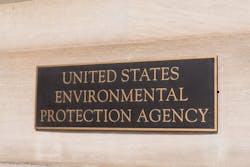The US Environmental Protection Agency (EPA) on Mar. 29 finalized strict pollution standards for heavy-duty vehicles like freight trucks and buses for model years 2027 through 2032.
The rule would help avoid about 1 billion tons of greenhouse gas emissions and generate about $13 billion in societal benefits through fewer deaths, hospitalizations and lost workdays, EPA said.
The agency explained that trucks and other heavy-duty vehicles account for one-quarter of all greenhouse gas emissions from the transportation sector, which is itself the single largest source of greenhouse gas emissions in the US.
The new rules come a week after the EPA announced new automobile emissions standards for passenger vehicles (OGJ Online, Mar. 20, 2024).
Like the medium- to light-duty vehicle rule EPA released on Mar. 20, the new heavy-duty rule’s pollution limits are laxer than initially proposed in earlier model years to help ease the transition and allow time for fueling infrastructure to advance.
Neither tailpipe rule prohibits conventional engines. Instead, EPA, in the latest release, described the rules as “technology-neutral and performance-based” standards that can use a wide range of technology, including advanced internal combustion engine vehicles, hybrid vehicles, plug-in hybrid electric vehicles, battery electric vehicles, and hydrogen fuel cell vehicles.
Zero-emissions heavy-duty engines exist, but they are more expensive than the traditional diesel engines, which represented about 98% of the heavy-duty vehicles sold in 2023, according to the US Energy Information Administration.
The oil and refinery industry urged Congress to overturn the rule, arguing the standards are unfeasible and could harm the economy by raising the cost of moving products.
“By moving forward with an extreme reliance on so-called heavy-duty zero emission vehicles, this rule disincentivizes the development of other fuel-based technologies—including American-made renewable diesel,” the leaders of the American Petroleum Industry and the American Fuel & Petrochemical Manufacturers said in a joint statement. “…[O]ur organizations are prepared to explore challenges in court.”

